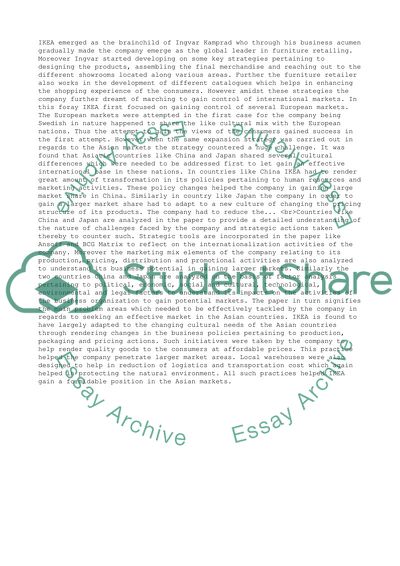Cite this document
(“IKEA's Globalization Strategies Essay Example | Topics and Well Written Essays - 4750 words”, n.d.)
Retrieved de https://studentshare.org/business/1392067-ikeas-globalization-strategies
Retrieved de https://studentshare.org/business/1392067-ikeas-globalization-strategies
(IKEA'S Globalization Strategies Essay Example | Topics and Well Written Essays - 4750 Words)
https://studentshare.org/business/1392067-ikeas-globalization-strategies.
https://studentshare.org/business/1392067-ikeas-globalization-strategies.
“IKEA'S Globalization Strategies Essay Example | Topics and Well Written Essays - 4750 Words”, n.d. https://studentshare.org/business/1392067-ikeas-globalization-strategies.


